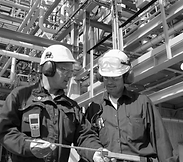Engineering and Technology Quarterly Reviews
ISSN 2622-9374




Published: 28 December 2020
Assessment of Safety Culture and Maturity in Mining Environments: Case of Njuli Quarry
Jabulani Matsimbe, Steven Ghambi, Abdul Samson
University of Malawi

Download Full-Text Pdf
10.5281/zenodo.4394789
Pages: 137-146
Keywords: Malawi, Maturity Model, Safety Management
Abstract
Due to an ever increasing concern for safety at most mines in Malawi, this paper aimed at assessing the safety culture and maturity in mining environments by applying the Safety Culture Maturity Model (SCMM). The SCMM is a practical and reliable diagnostic tool to use in the context of Malawian mining environments because it emphasizes the importance of employee involvement in assessing and improving safety culture. Njuli quarry is used as a case study due to its adoption of modern mining technologies and long existence in the mining industry. The methods used to assess the level of maturity of safety culture comprised questionnaires, interviews and behavioral observations. To test the reliability of the questionnaire, the respondents were interviewed using the same questions and comparing the results. There was good reliability of the measures used since the correlation coefficients between questionnaire and interview ranged from r = 0.9 to 1. The results demonstrate that Njuli quarry has more characteristics of the Managing Level 2 or Developing Stage with percentages ranging 55% - 60% followed by the Emerging Level 1 ranging 33% - 36%. The Involving Level 3 ranged 4% - 10% showing improvement in some items of the dimensions of the safety framework. The company had the lowest percentages of 0% - 2% in Cooperating Level 4, and 0% - 1% in Continually Improving Level 5. This was expected because most mining companies in Malawi focus on maximizing production regardless of the safety implications, and also employees do not take safety issues seriously despite minor accidents and near misses. Therefore, the company should carry out safety trainings, set up a safety department, provide PPE to employees, and introduce rewards for best safety performance. Present study has added new knowledge on levels of maturity of safety culture in Malawi’s mining environments which will influence the Department of Mines in policy development, site safety inspections and safety audits.
References
British HSE. (2007). Safety Culture Maturity Model. Health and Safety Executive.
Chiocha, C., Smallwood, J., & Emuze F. (2011). Health and safety in the Malawian construction industry. Acta Structilia 18(1).
European Union. (2011). Malawi National Occupational Safety and Health Programme-Moving towards zero accidents and diseases at work. International Labour Organization.
Goncalves, A.P. F., Andrade, C.O., Marinho, M.M.O. (2010). A safety culture maturity model for petrochemical companies in Brazil. Safety Science 48, 615-624. https://doi.org/: 10.1016/j.ssci.2010.01.012
Field, A. (2005). Statistics Using SPSS. SAGE, London.
Fleming, M. (2001). Safety Culture Maturity Model. Report 2000/049. Health and Safety Executive. Colegate, Norwich.
International Atomic Energy Agency, IAEA (2002a). Safety Culture in Nuclear Installations: Guidance for Use in the Enhancement of Safety Culture. International Atomic Energy Agency, Vienna.
Lardner, R. (2002). Towards a mature safety culture. The Keil Centre Ltd.
Mining Safety Regulations. (1982). Laws of Malawi-Mines and Minerals Cap. 61:01. Government of Malawi.



